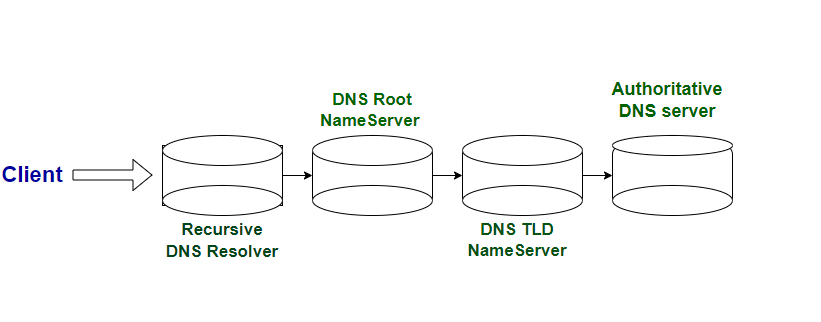A Root Nameserver is a fundamental component of the Domain Name System (DNS) infrastructure. It is the highest level of the DNS hierarchy and serves as the starting point for the resolution of domain names to IP addresses. The primary function of a Root Nameserver is to direct DNS resolvers to the authoritative nameservers for the Top-Level Domains (TLDs) associated with a given domain.

Key points About Root Nameservers:
- Top of the DNS Hierarchy:
- Designation by a Dot (“.”):
- 13 Sets of Root Nameservers:
- There are 13 sets of root nameservers labeled A through M. Each set consists of multiple individual servers distributed globally and operated by different organizations. These servers are strategically located to ensure redundancy and improve the resilience of the DNS infrastructure.
- IP Anycast Technology:
- Each set of root nameservers is implemented using IP anycast technology. This means that multiple physical servers share the same IP address, and the network routes traffic to the nearest available server. This enhances the efficiency and reliability of DNS resolution.
- Resolution of TLDs:
- When a DNS resolver receives a query for a domain name, it first contacts one of the root nameservers. The root nameserver doesn’t have the specific IP address for the requested domain but responds with a referral to the authoritative nameservers for the relevant TLD.
- Distribution of TLD Information:
- The root nameservers provide information about the TLDs, such as “.com,” “.org,” “.net,” etc. The resolver, guided by this information, then queries the TLD nameservers to obtain information about the authoritative nameservers for the second-level domain.
- Operated by Different Organizations:
- The operation and maintenance of the 13 sets of root nameservers are distributed among various organizations to ensure diversity and prevent a single point of failure.
13 Sets of Root Nameservers
The authoritative name servers that serve the DNS root zone, commonly known as the “root servers”, are a network of hundreds of servers in many countries around the world. They are configured in the DNS root zone as 13 named authorities, as follows.
List of Root Servers
| HOSTNAME | IP ADDRESSES | OPERATOR |
|---|---|---|
| a.root-servers.net | 198.41.0.4, 2001:503:ba3e::2:30 | Verisign, Inc. |
| b.root-servers.net | 170.247.170.2, 2801:1b8:10::b | University of Southern California, Information Sciences Institute |
| c.root-servers.net | 192.33.4.12, 2001:500:2::c | Cogent Communications |
| d.root-servers.net | 199.7.91.13, 2001:500:2d::d | University of Maryland |
| e.root-servers.net | 192.203.230.10, 2001:500:a8::e | NASA (Ames Research Center) |
| f.root-servers.net | 192.5.5.241, 2001:500:2f::f | Internet Systems Consortium, Inc. |
| g.root-servers.net | 192.112.36.4, 2001:500:12::d0d | US Department of Defense (NIC) |
| h.root-servers.net | 198.97.190.53, 2001:500:1::53 | US Army (Research Lab) |
| i.root-servers.net | 192.36.148.17, 2001:7fe::53 | Netnod |
| j.root-servers.net | 192.58.128.30, 2001:503:c27::2:30 | Verisign, Inc. |
| k.root-servers.net | 193.0.14.129, 2001:7fd::1 | RIPE NCC |
| l.root-servers.net | 199.7.83.42, 2001:500:9f::42 | ICANN |
| m.root-servers.net | 202.12.27.33, 2001:dc3::35 | WIDE Project |